To read the full story, subscribe here to NZ Mountain Biker.
Picton is a town most people like passing through. As the ferry terminal for the South Island, travel in either direction involves Picton. If you’re a lucky Northerner arriving in the South Island, it’s a sort of welcome sign that flashes past as soon as you hit the road out. You might spend a couple of hours there on the way back, but if you’re anything like us you will be exhausted and in a kind of funk about having to head back to normality.
Located at the head of Queen Charlotte Sound, the town is small enough to feel crowded into the water by the surrounding bush, but large enough to support a great variety of accommodation, transport, and eating options.
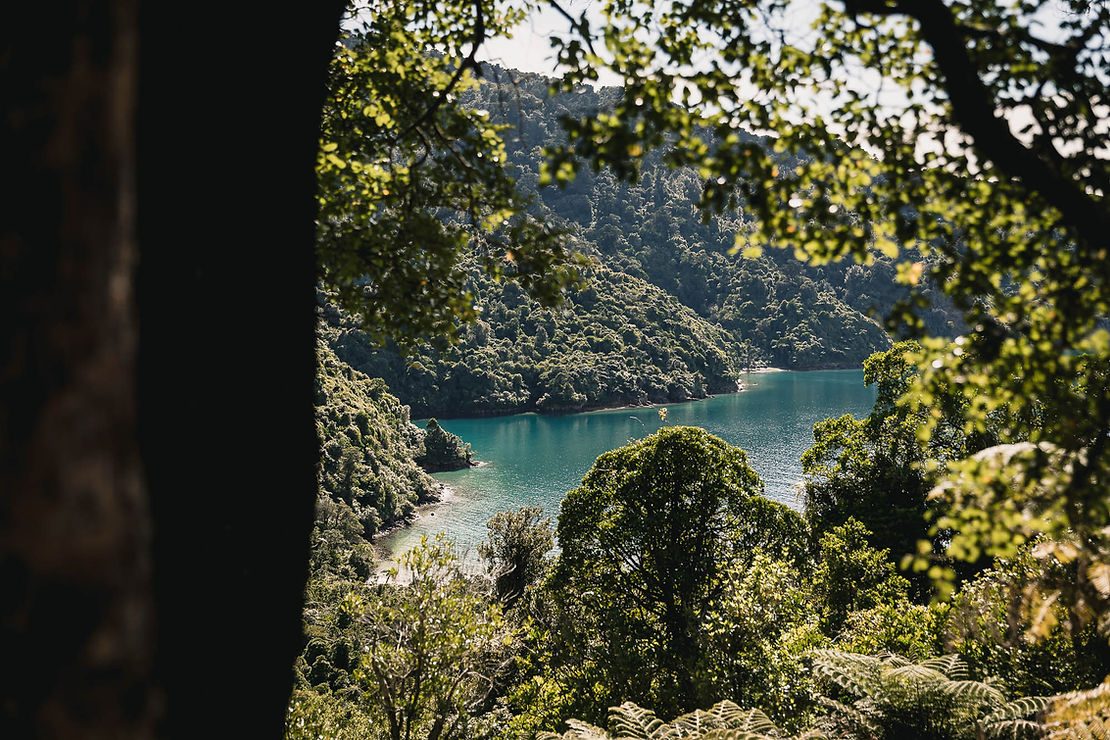
Picton is the traditional hopping-off point for the Queen Charlotte Track. Scratched out of the tough terrain in the early 80s, based on sections of historic trails, the track was opened to walkers in 1983. Keeping a track that is 71 kilometres long in operational condition was beyond the capabilities of the determined people that instigated it, but with the formation of the Department of Conservation in 1987 – and a big effort involving people from DoC and the Air Force – the track was cleared and improved and has been a favourite ever since.
Open to bikes except for a section that closes over the height of summer, the Queen Charlotte was a shoo-in to the National Cycleway project. Unlike many trails developed since, Queen Charlotte was not built for bikes, and that is what makes it so unique as a bike ride.
You travel to the northern start point by boat (it’s the only way to get there), a scenic jaunt from Picton that takes about an hour. You step off the boat in the solitude and spectacle of Ship Cove / Meretoto, the hills ringing with birdsong.
Many people choose to use the other unique feature of Queen Charlotte – a fine selection of accommodation literally en route. Riders can have their gear ferried to many stops along the trail and make the ride last two or three days with no need to be weighed down by baggage. We’d done that on a previous expedition and it was a really good way to do it. Another special feature is that anybody who doesn’t want to ride a section, or in fact any of the trail at all, can go by boat, and be located in a deckchair with a wine and a book by the time the riders come along.
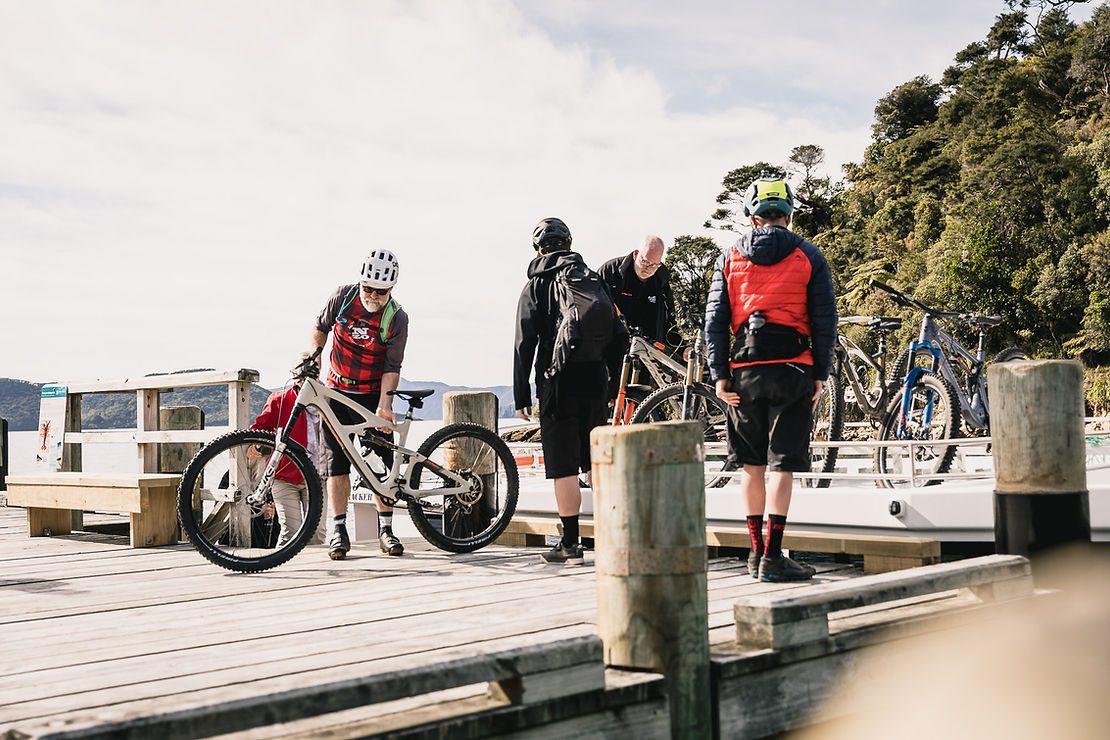
On this outing, we took a different tack, and based ourselves at the Yacht Club for the duration. There are solid arguments in favour of either approach, but the upside of a fixed base is the opportunity to let your kit explode across a room and only have to round it all up again once. As we had two days to do Queen Charlotte, and a third day to ride the legendary Nydia Bay Track, the fixed base won out. The bonus was a couple of extra boat rides, and spectacular dinners in Picton.
Our first day was pegged to be a 51km effort from Ship Cove to Torea Bay. We had breakfast in the hotel, then did the freewheel to the waiting ferry. The boat had a very nice roof-rack with space enough for heaps of bikes, ours as well as some bikes belonging to friends we had along for surprise company – Kylie and Matty were out for a day ride before heading further south. There was space for several more.
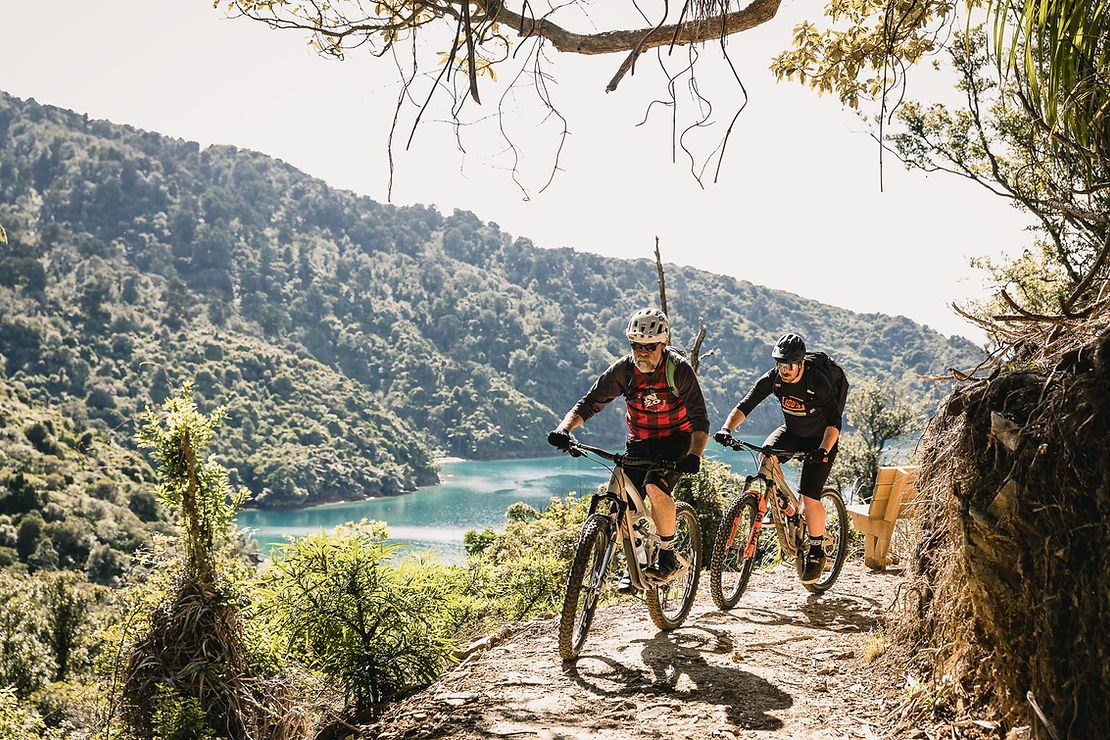
The start of Queen Charlotte Track at Ship Cove is stunning. There is ancient forest, clear water under the jetty, and on this day, a certain trepidation on my part about the first part of the route. On our previous mission, the first climb was very hard. It went straight up, and was almost impossible to ride. To my relief, the track has had some major upgrades, and the new line is a textbook example of how to get to a pretty decent height without too much pain.
The trail switchbacks its way up through the forest before the climb topping out at 237m with a long view toward the rest of the ride. Diving off the saddle there is a really nice section of very fast, wide open trail down almost to sea level in a couple of kilometres, before the climb to the next saddle gets underway. The trail is classic back-country mountain biking.
The Sounds is an amazing place to be – every piece of land seems impossibly steep, and the shore is so convoluted that the Sounds contain 20% of New Zealand’s total coastline. Every high point presents another aspect of that complex geography.
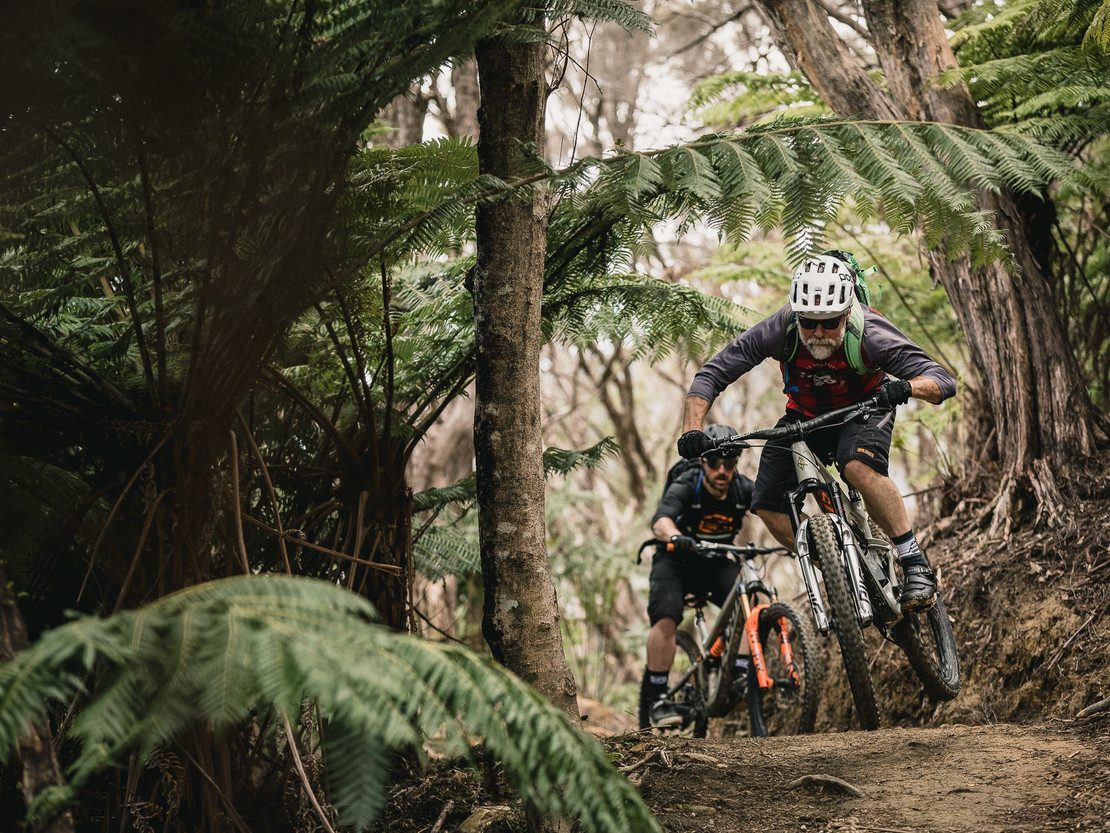
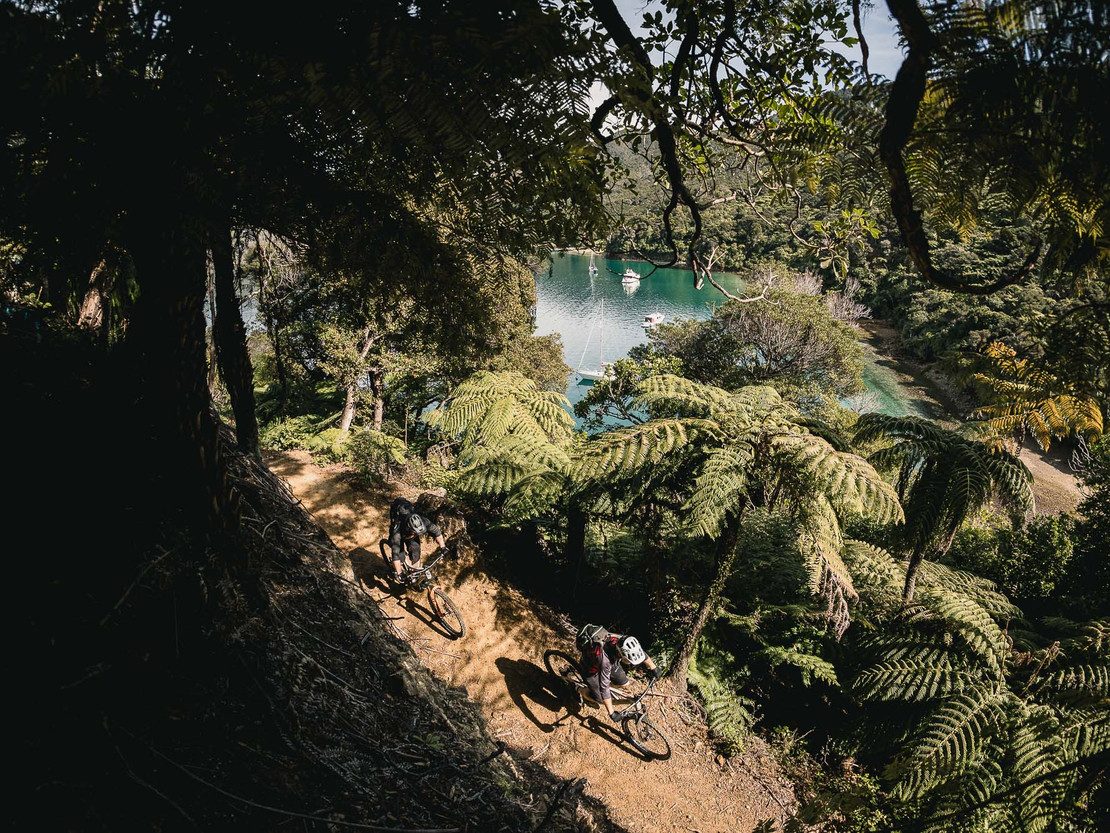

It is after the climb to Kenepuru Saddle that the trail starts to be a grind. Following the ridge gives many opportunities to look out across the Sounds, but it also results in some very steep climbs. Still, among the relentless, almost unrideable ascents, were some neat little sections of downhill. The final descent to Torea Bay, and the surreal experience of rolling on to a jetty where a ferry waited, was a fitting end to the day’s ride.
Words: Gary Sullivan
Images: Cameron Mackenzie

